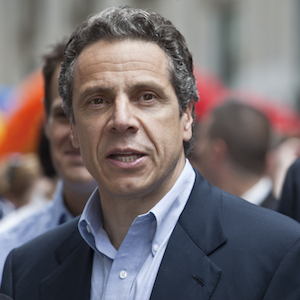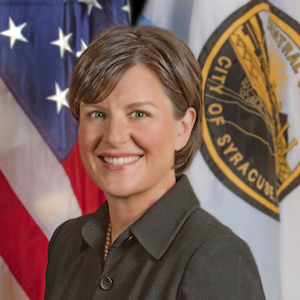One of this year’s most closely watched Democratic primary races – Cuomo vs. Nixon – has ended, as the polls predicted, with a commanding victory by the incumbent. But that doesn’t mean the governor's race is over. In November, Cuomo will face several challengers: a Republican and a trio of third-party contenders. Here is the state of the race heading into the general election.
Democratic nominee

A spate of scandals and snafus leading up to the primary – including the corruption conviction of Joe Percoco and other allies, mailers accusing Nixon of anti-Semitism, the delayed opening of the new Governor Mario M. Cuomo Bridge – were also not enough to weigh the incumbent down. Cuomo remains the favored candidate leading up to November, as Republicans haven’t elected any candidate to statewide office in years. Still, Cuomo will have to keep his eye on the Republican and third-party candidates – which collectively could pose a real threat.
Republican nominee
[[{"fid":"4042","view_mode":"default","fields":{"format":"default","field_file_image_alt_text[und][0][value]":"Marc Molinaro","field_file_image_title_text[und][0][value]":"Marc Molinaro"},"type":"media","field_deltas":{"2":{"format":"default","field_file_image_alt_text[und][0][value]":"Marc Molinaro","field_file_image_title_text[und][0][value]":"Marc Molinaro"}},"attributes":{"alt":"Marc Molinaro","title":"Marc Molinaro","style":"height: 300px; width: 300px; float: left;","class":"media-element file-default","data-delta":"2"}}]]
Dutchess County Executive Marc Molinaro - Dutchess County Executive Marc Molinaro declined to run at the beginning of the year, but a “Draft Molinaro” campaign from some statewide Republicans induced him to enter the fray. He officially launched his campaign on April 2. He quickly racked up endorsements from many Republican county leaders, giving him enough support to win the Republican nomination at the party’s state convention in May, while forcing state Sen. John DeFrancisco out of the gubernatorial race.
While Cuomo will is continuing to lump Molinaro in with his criticism of President Donald Trump, Molinaro has attempted to draw a line between himself and the president. Molinaro didn’t vote for Trump, and says he doesn’t support the practice of separating immigrant families at the border or attempts to roll back abortion rights, according to Newsday. Still, the road is uphill for Republicans seeking statewide office in New York.
Third-party candidates

Larry Sharpe – Sharpe, a businessman, has the Libertarian Party’s endorsement in the gubernatorial race. On the MTA, he told City & State: "Yeah, I'm not going to fund them any more at all. They get what they get and that's it. And that will make them have to collapse, I don't care." His campaign says that means he won't give the MTA any additional funding. Sharpe is also running on a platform of decentralized education policy and legalizing marijuana.
Howie Hawkins – Hawkins was the Green Party gubernatorial candidate in 2014 and he has launched a campaign against Cuomo again this cycle on the Green Party line. Since Cuomo defeated Nixon in the Democratic primary, Hawkins has branded himself as “Plan B” for progressives. While a Green Party candidate has never won a gubernatorial race in New York, Hawkins has recognized the energy behind far left candidates like Nixon and hopes to harness the liberal voters dissatisfied with Cuomo.
The state of the general election
Having beaten Nixon handily, Cuomo is well-positioned for the general election, despite the potential troublesome challenges from Miner and the progressive “Plan B” Hawkins. Democrats have a vast voter registration advantage in New York, and other Democratic officials in New York – such as U.S. Sen. Kirsten Gillibrand and state Comptroller Thomas DiNapoli – are popular in the state, while the Republican Party is not. New York has not had a Republican candidate win statewide office since Gov. George Pataki, who was last re-elected in 2002.
Voter turnout in the primary election was higher than either candidates or pollsters expected. More than two times as many voters showed up at the polls this year than did in 2014 – hinting at the possibility of a “blue wave” carrying over into the general election.
NEXT STORY: Max Rose’s 'Staten Island first' strategy


